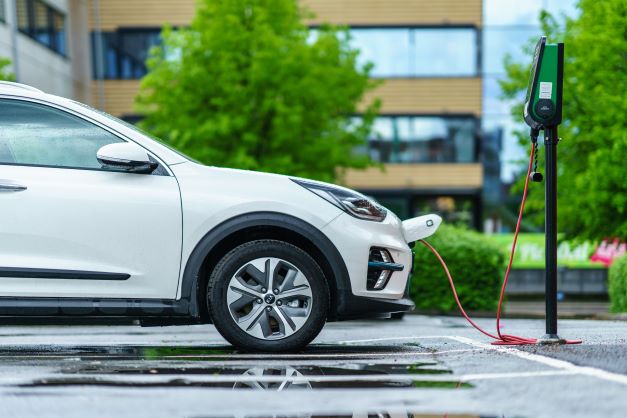3 ways to charge your EV without a home charger
Can you have an electric car without a home charger?
There are big benefits to making the switch to an electric car such as reduced running costs, significantly lowering your carbon footprint, and the zen-like motoring granted by silent electric running. Sounds perfect, but what if you don’t have a home charger? Does that mean you can’t have an EV?
The ideal setup for electric vehicle ownership is a home charger that allows you to top-up your car overnight while it’s not in use, saving you time and the cost of charging at peak rates. However, nearly a quarter of UK drivers don’t have access to off-street parking, naturally causing some hesitation about choosing an EV. The good news is that it is possible to go electric without a home charger.
1. Public Charging
Infrastructure is still growing in the UK, but the past decade has seen vast improvements in the number of chargers and their dependability. To see how many devices your area has, visit https://maps.dft.gov.uk/ev-charging-map/index.html
The government has announced a £950 million rapid charging fund to ensure that busy road networks can support EV adoption. With a little bit of forward planning, public charging needn’t be too much of an inconvenience.
The government’s report on the rapid charging fund states
“Confidence in the ability to undertake longer journeys is fundamental to EV adoption. We will ensure that every motorway service area has at least six rapid chargers by the end of 2023, with some having more than 12. There will be over 6,000 high powered chargers along our strategic roads by 2035. Electricity network capacity at motorway service areas will be ready to meet demand to 2035 and beyond.”
There is also a £500m local infrastructure support programme to drive innovative new approaches to deploying local chargepoints at scale. Including through a new £10m pilot (plus £8.6M private investment) which is aimed at providing 1000+ on-street chargers. Initial authorities participating are: Barnet, Dorset, Durham, Kent, Midland-Connect, North Yorkshire, Nottingham, Suffolk & Warrington.
Elsewhere, government is working with Local Authorities to use the £450m Local Electric Vehicle Infrastructure (LEVI) Fund. Exploring deployment of local charging at scale, to better understand some of the challenges faced by drivers who don’t have off-street parking.
If you are only making short commutes throughout the week and have an EV such as a Nissan Leaf e+ with a range of up to 239 miles, charging once each week for 35-minutes at a rapid charger, should be enough.
In the short-term, for longer journeys, it would be good to have a couple of favoured charges to give you several options for a charge. Sometimes chargers get busy or have an issue, so knowing you have a backup grants you peace of mind, should that happen.
There are several great apps that can keep you in the loop on charger health and even if they are in use, but many EVs now also have this helpful information built into their navigation systems.

2. Destination Charging
Destination charging is when you charge your electric car when you arrive at your destination for example at your place of work, restaurants, sporting venues etc. Many destinations are adapting to the world of EVs, thus making running one and charging when you get there even easier.
Typically, we would all think about charging before we set off, but by turning your journey on its head, it is easily possible to live without a home charger.With supermarket chains such as Morrisons and Tesco having chargers at their locations, as well as many shopping malls and town centres, there is bound to be some local to you.
Apps such as www.zap-map.com show a full list of where chargers are in the UK, with more added daily. If you use their route planner, it will highlight where available chargers are on your route and at your destination.
3. Opportunistic Charging
Opportunistic charging is topping up your charge as and when you can; any time the car is stationary is the perfect opportunity to charge. Sometimes it isn’t possible to spend long periods of time at a public charger, so topping up when and where you can, might be your ideal method.
A 7kw charger is unlikely to quench your car’s electric thirst if charging for short periods, so look out for places that offer DC rapid charging. Plugging in for 15 minutes will get you a meaningful gain in the predicted range.
Take a look at our journey cost calculator, powered by Zap Map to see how much it would cost you to switch to an EV
Journey Cost Calculator
